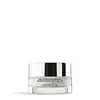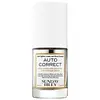What's inside
What's inside
 Key Ingredients
Key Ingredients

 Benefits
Benefits

 Concerns
Concerns

 Ingredients Side-by-side
Ingredients Side-by-side

Water
Skin ConditioningGlycerin
HumectantCaprylic/Capric Triglyceride
MaskingCoco-Caprylate
EmollientSorbitan Stearate
EmulsifyingHydrogenated Starch Hydrolysate
HumectantAcacia Senegal Gum
MaskingButyrospermum Parkii Butter
Skin ConditioningButylene Glycol
HumectantCetyl Alcohol
EmollientTocopheryl Acetate
AntioxidantSodium Acetylated Hyaluronate
HumectantSodium Hyaluronate
HumectantHydrolyzed Sodium Hyaluronate
Skin ConditioningPalmitoyl Tripeptide-5
Skin ConditioningPsilanthus Bengalensis Leaf Cell Culture Extract
Skin ConditioningAphanizomenon Flos-Aquae Extract
HumectantSodium Hyaluronate Crosspolymer
HumectantAlbizia Julibrissin Bark Extract
MaskingFraxinus Excelsior Bark Extract
Skin ConditioningRubus Idaeus Leaf Cell Culture
Skin ConditioningNiacinamide
SmoothingCaffeine
Skin ConditioningChondrus Crispus Extract
Skin ConditioningDarutoside
Skin ConditioningHydrolyzed Rhizobian Gum
Glycolic Acid
BufferingBiosaccharide Gum-1
HumectantBisabolol
MaskingPanthenol
Skin ConditioningSilanetriol
Carbomer
Emulsion StabilisingDimethicone
EmollientDisodium EDTA
Xanthan Gum
EmulsifyingSodium Hydroxide
BufferingEthylhexylglycerin
Skin ConditioningHelianthus Annuus Seed Oil
EmollientTocopherol
AntioxidantPentylene Glycol
Skin ConditioningPantolactone
HumectantSodium Benzoate
MaskingPhenoxyethanol
PreservativePotassium Sorbate
PreservativeCitric Acid
BufferingWater, Glycerin, Caprylic/Capric Triglyceride, Coco-Caprylate, Sorbitan Stearate, Hydrogenated Starch Hydrolysate, Acacia Senegal Gum, Butyrospermum Parkii Butter, Butylene Glycol, Cetyl Alcohol, Tocopheryl Acetate, Sodium Acetylated Hyaluronate, Sodium Hyaluronate, Hydrolyzed Sodium Hyaluronate, Palmitoyl Tripeptide-5, Psilanthus Bengalensis Leaf Cell Culture Extract, Aphanizomenon Flos-Aquae Extract, Sodium Hyaluronate Crosspolymer, Albizia Julibrissin Bark Extract, Fraxinus Excelsior Bark Extract, Rubus Idaeus Leaf Cell Culture, Niacinamide, Caffeine, Chondrus Crispus Extract, Darutoside, Hydrolyzed Rhizobian Gum, Glycolic Acid, Biosaccharide Gum-1, Bisabolol, Panthenol, Silanetriol, Carbomer, Dimethicone, Disodium EDTA, Xanthan Gum, Sodium Hydroxide, Ethylhexylglycerin, Helianthus Annuus Seed Oil, Tocopherol, Pentylene Glycol, Pantolactone, Sodium Benzoate, Phenoxyethanol, Potassium Sorbate, Citric Acid
Water
Skin ConditioningPEG-8 Beeswax
EmulsifyingCaprylyl Caprylate/Caprate
EmollientPolyglyceryl-6 Distearate
EmulsifyingDimethicone
EmollientC10-18 Triglycerides
EmollientGlycerin
HumectantPolypropylsilsesquioxane
Phenyl Trimethicone
Skin ConditioningHydroxyethyl Acrylate/Sodium Acryloyldimethyl Taurate Copolymer
Emulsion StabilisingTrimethylsiloxysilicate
EmollientAnthemis Nobilis Flower Oil
MaskingBoron Nitride
AbsorbentFructose
HumectantJojoba Esters
EmollientSodium Phytate
Theobroma Cacao Seed Butter
EmollientPolyglyceryl-3 Beeswax
EmulsifyingButyrospermum Parkii Butter
Skin ConditioningPropanediol
SolventAesculus Hippocastanum Extract
AntioxidantCoffea Arabica Seed Extract
MaskingMethylpropanediol
SolventAcmella Oleracea Extract
Skin ProtectingPolysilicone-11
Caprylyl Glycol
EmollientCaffeine
Skin ConditioningCitrullus Lanatus Fruit Extract
Skin ConditioningPyrus Malus Fruit Extract
Skin ConditioningLens Esculenta Fruit Extract
Skin ConditioningSodium PCA
HumectantSodium Lactate
BufferingPtychopetalum Olacoides Bark/Stem Extract
Skin ConditioningPfaffia Paniculata Root Extract
SoothingLilium Candidum Flower Extract
Skin ConditioningPhenoxyethanol
PreservativeGlycolic Acid
BufferingSynthetic Fluorphlogopite
Silica
AbrasiveMica
Cosmetic ColorantTitanium Dioxide
Cosmetic ColorantCarthamus Tinctorius Seed Oil
MaskingTagetes Erecta Flower Extract
PerfumingTriethyl Citrate
MaskingCetyl Alcohol
EmollientCaprylyl/Capryl Glucoside
CleansingBenzoic Acid
MaskingLecithin
EmollientPolysorbate 60
EmulsifyingSorbitan Isostearate
EmulsifyingPotassium Sorbate
PreservativeBenzyl Alcohol
PerfumingSodium Benzoate
MaskingCitric Acid
BufferingLinalool
PerfumingLimonene
PerfumingWater, PEG-8 Beeswax, Caprylyl Caprylate/Caprate, Polyglyceryl-6 Distearate, Dimethicone, C10-18 Triglycerides, Glycerin, Polypropylsilsesquioxane, Phenyl Trimethicone, Hydroxyethyl Acrylate/Sodium Acryloyldimethyl Taurate Copolymer, Trimethylsiloxysilicate, Anthemis Nobilis Flower Oil, Boron Nitride, Fructose, Jojoba Esters, Sodium Phytate, Theobroma Cacao Seed Butter, Polyglyceryl-3 Beeswax, Butyrospermum Parkii Butter, Propanediol, Aesculus Hippocastanum Extract, Coffea Arabica Seed Extract, Methylpropanediol, Acmella Oleracea Extract, Polysilicone-11, Caprylyl Glycol, Caffeine, Citrullus Lanatus Fruit Extract, Pyrus Malus Fruit Extract, Lens Esculenta Fruit Extract, Sodium PCA, Sodium Lactate, Ptychopetalum Olacoides Bark/Stem Extract, Pfaffia Paniculata Root Extract, Lilium Candidum Flower Extract, Phenoxyethanol, Glycolic Acid, Synthetic Fluorphlogopite, Silica, Mica, Titanium Dioxide, Carthamus Tinctorius Seed Oil, Tagetes Erecta Flower Extract, Triethyl Citrate, Cetyl Alcohol, Caprylyl/Capryl Glucoside, Benzoic Acid, Lecithin, Polysorbate 60, Sorbitan Isostearate, Potassium Sorbate, Benzyl Alcohol, Sodium Benzoate, Citric Acid, Linalool, Limonene
 Reviews
Reviews

Alternatives
Ingredients Explained
These ingredients are found in both products.
Ingredients higher up in an ingredient list are typically present in a larger amount.
This ingredient is also known as shea butter. It is an effective skin hydrator and emollient.
Emollients help soothe and soften your skin. It does this by creating a protective film on your skin. This barrier helps trap moisture and keeps your skin hydrated. Emollients may be effective at treating dry or itchy skin.
Shea butter is rich in antioxidants. Antioxidants help fight free-radicals, or molecules that may harm the body. It is also full of fatty acids including stearic acid and linoleic acid. These acids help replenish the skin and keep skin moisturized.
While Shea Butter has an SPF rating of about 3-4, it is not a sunscreen replacement.
Shea butter may not be fungal acne safe. We recommend speaking with a professional if you have any concerns.
Learn more about Butyrospermum Parkii ButterCaffeine is most associated with coffee, tea, and cacao. In skincare, it helps with calming inflammation and is rich in antioxidants.
While caffeine is used to treat cellulite and and dark circles, further studies are needed to prove this. It has been believed to help with these skin conditions due to its ability to dilate blood vessels and increase blood flow.
Some studies are looking into caffeine's ability to protect against UV rays.
Learn more about CaffeineCetyl Alcohol is a fatty alcohol. Fatty Alcohols are most often used as an emollient or to thicken a product.
Its main roles are:
Though it has "alcohol" in the name, it is not related to denatured alcohol or ethyl alcohol.
The FDA allows products labeled "alcohol-free" to have fatty alcohols.
Learn more about Cetyl AlcoholCitric Acid is an alpha hydroxy acid (AHA) naturally found in citrus fruits like oranges, lemons, and limes.
Like other AHAs, citric acid can exfoliate skin by breaking down the bonds that hold dead skin cells together. This helps reveal smoother and brighter skin underneath.
However, this exfoliating effect only happens at high concentrations (20%) which can be hard to find in cosmetic products.
Due to this, citric acid is usually included in small amounts as a pH adjuster. This helps keep products slightly more acidic and compatible with skin's natural pH.
In skincare formulas, citric acid can:
While it can provide some skin benefits, research shows lactic acid and glycolic acid are generally more effective and less irritating exfoliants.
Most citric acid used in skincare today is made by fermenting sugars (usually from molasses). This synthetic version is identical to the natural citrus form but easier to stabilize and use in formulations.
Read more about some other popular AHA's here:
Learn more about Citric AcidDimethicone is a type of synthetic silicone created from natural materials such as quartz.
What it does:
Dimethicone comes in different viscosities:
Depending on the viscosity, dimethicone has different properties.
Ingredients lists don't always show which type is used, so we recommend reaching out to the brand if you have questions about the viscosity.
This ingredient is unlikely to cause irritation because it does not get absorbed into skin. However, people with silicone allergies should be careful about using this ingredient.
Note: Dimethicone may contribute to pilling. This is because it is not oil or water soluble, so pilling may occur when layered with products. When mixed with heavy oils in a formula, the outcome is also quite greasy.
Learn more about DimethiconeGlycerin is already naturally found in your skin. It helps moisturize and protect your skin.
A study from 2016 found glycerin to be more effective as a humectant than AHAs and hyaluronic acid.
As a humectant, it helps the skin stay hydrated by pulling moisture to your skin. The low molecular weight of glycerin allows it to pull moisture into the deeper layers of your skin.
Hydrated skin improves your skin barrier; Your skin barrier helps protect against irritants and bacteria.
Glycerin has also been found to have antimicrobial and antiviral properties. Due to these properties, glycerin is often used in wound and burn treatments.
In cosmetics, glycerin is usually derived from plants such as soybean or palm. However, it can also be sourced from animals, such as tallow or animal fat.
This ingredient is organic, colorless, odorless, and non-toxic.
Glycerin is the name for this ingredient in American English. British English uses Glycerol/Glycerine.
Learn more about GlycerinGlycolic Acid is arguably the most famous alpha hydroxy acid (AHA) with tons of research backing its benefits.
It is found naturally in sugar cane but the form used in skincare is usually synthetic for purity and stability.
Glycolic acid removes the top layer of dead skin cells to allow newer and fresher ones to emerge.
AHAs work by breaking down the structural “glue” that holds old skin cells in place. When that buildup is gone, your skin can renew itself more efficiently.
Research also shows glycolic acid stimulates collagen production, helping to firm and thicken the skin over time. This is one of its biggest advantages over other AHAs.
Overall, glycolic acid helps with:
Fun fact: Glycolic acid boosts skin hydration by helping it produce molecules that increase hyaluronic acid naturally.
To work best, glycolic acid products should have a pH between 3-4 (that’s where exfoliation is most effective but still gentle on skin).
The pH and concentration of a product are key to its effectiveness:
It is normal to feel a slight stinging sensation when using glycolic acid. This usually fades as your skin adjusts.
Because glycolic acid has the smallest molecular size in the AHA family, it can penetrate deeper, which enhances its effectiveness but also makes it more likely to irritate sensitive skin.
If your skin is very sensitive or prone to rosacea, glycolic acid may be too strong; in that case, try milder options like lactic acid or a PHA instead.
Recent studies suggest glycolic acid might even help protect against UV damage. But don’t skip sunscreen! Freshly exfoliated skin is more sensitive to the sun.
Glycolic acid is a skincare superstar. It smooths, brightens, hydrates, and firms the skin. Unless you’re highly sensitive, it’s well worth adding to your routine.
Read more about some other popular AHA's here:
Learn more about Glycolic AcidPhenoxyethanol is a preservative that has germicide, antimicrobial, and aromatic properties. Studies show that phenoxyethanol can prevent microbial growth. By itself, it has a scent that is similar to that of a rose.
It's often used in formulations along with Caprylyl Glycol to preserve the shelf life of products.
Potassium Sorbate is a preservative used to prevent yeast and mold in products. It is commonly found in both cosmetic and food products.
This ingredient comes from potassium salt derived from sorbic acid. Sorbic acid is a natural antibiotic and effective against fungus.
Both potassium sorbate and sorbic acid can be found in baked goods, cheeses, dried meats, dried fruit, ice cream, pickles, wine, yogurt, and more.
You'll often find this ingredient used with other preservatives.
Learn more about Potassium SorbateSodium Benzoate is a preservative. It's used in both cosmetic and food products to inhibit the growth of mold and bacteria. It is typically produced synthetically.
Both the US FDA and EU Health Committee have approved the use of sodium benzoate. In the US, levels of 0.1% (of the total product) are allowed.
Sodium benzoate works as a preservative by inhibiting the growth of bacteria inside of cells. It prevents the cell from fermenting a type of sugar using an enzyme called phosphofructokinase.
It is the salt of benzoic acid. Foods containing sodium benzoate include soda, salad dressings, condiments, fruit juices, wines, and snack foods.
Studies for using ascorbic acid and sodium benzoate in cosmetics are lacking, especially in skincare routines with multiple steps.
We always recommend speaking with a professional, such as a dermatologist, if you have any concerns.
Learn more about Sodium BenzoateWater. It's the most common cosmetic ingredient of all. You'll usually see it at the top of ingredient lists, meaning that it makes up the largest part of the product.
So why is it so popular? Water most often acts as a solvent - this means that it helps dissolve other ingredients into the formulation.
You'll also recognize water as that liquid we all need to stay alive. If you see this, drink a glass of water. Stay hydrated!
Learn more about Water